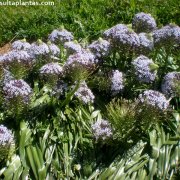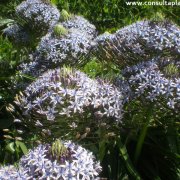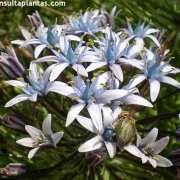Care of the bulbous plant Scilla peruviana or Portuguese squill |
|
The genus Scilla, family Asparagaceae, comprises 90 species of bulbous plants native to Asia, Africa and Europe. Some species are: Scilla peruviana, Scilla obtusifolia, Scilla natalensis, Scilla latifolia, Scilla bifolia, Scilla autumnalis, Scilla lanceolata, Scilla italica, Scilla lanceolata, Scilla sibirica, Scilla odorata. Common names: Portuguese squill, Cuban lily, Giant Scilla. This species is native to the Mediterranean region. They are small plants with pear-shaped bulbs that reach 40 cm (15.74") in height. The linear and pointed leaves appear in a rosette and are fleshy. They produce spectacular blue inflorescences in the shape of conical umbels. They bloom in spring. These easy-to-grow plants are used in rockery, on borders, in groups of bulbous plants and in pots for terraces and balconies; they are also used as cut flowers. They are ideal for gardens by the sea. Scilla peruviana needs exposure to full sun or light shade. They resist occasional frosts down to -3 ºC (26.6 ºF). The soil can be a normal garden soil with a little organic matter. Water regularly until flowering because the resting phase begins and they no longer need water. Fertilize with manure in the fall. They are quite long-lived plants and resistant to the usual pests and diseases. They are propagated from the bulblets that the plant produces; if they are propagated from seeds, wait 3 years for the first flowering. |
Images of the bulbous plant Scilla peruviana or Portuguese squill |
Find plants
Scilla peruviana or Portuguese squill | Care and Growing
© 2024 FavThemes


